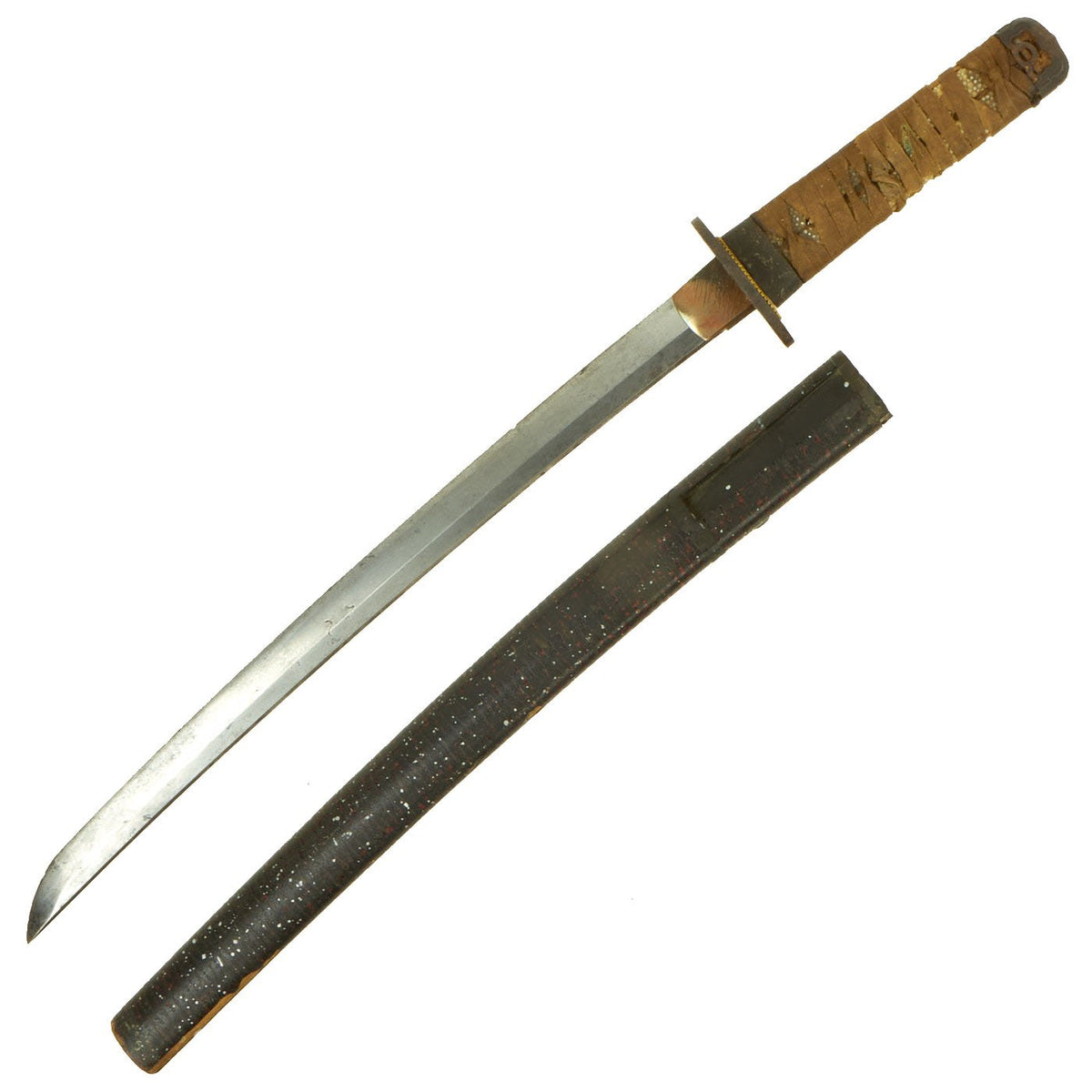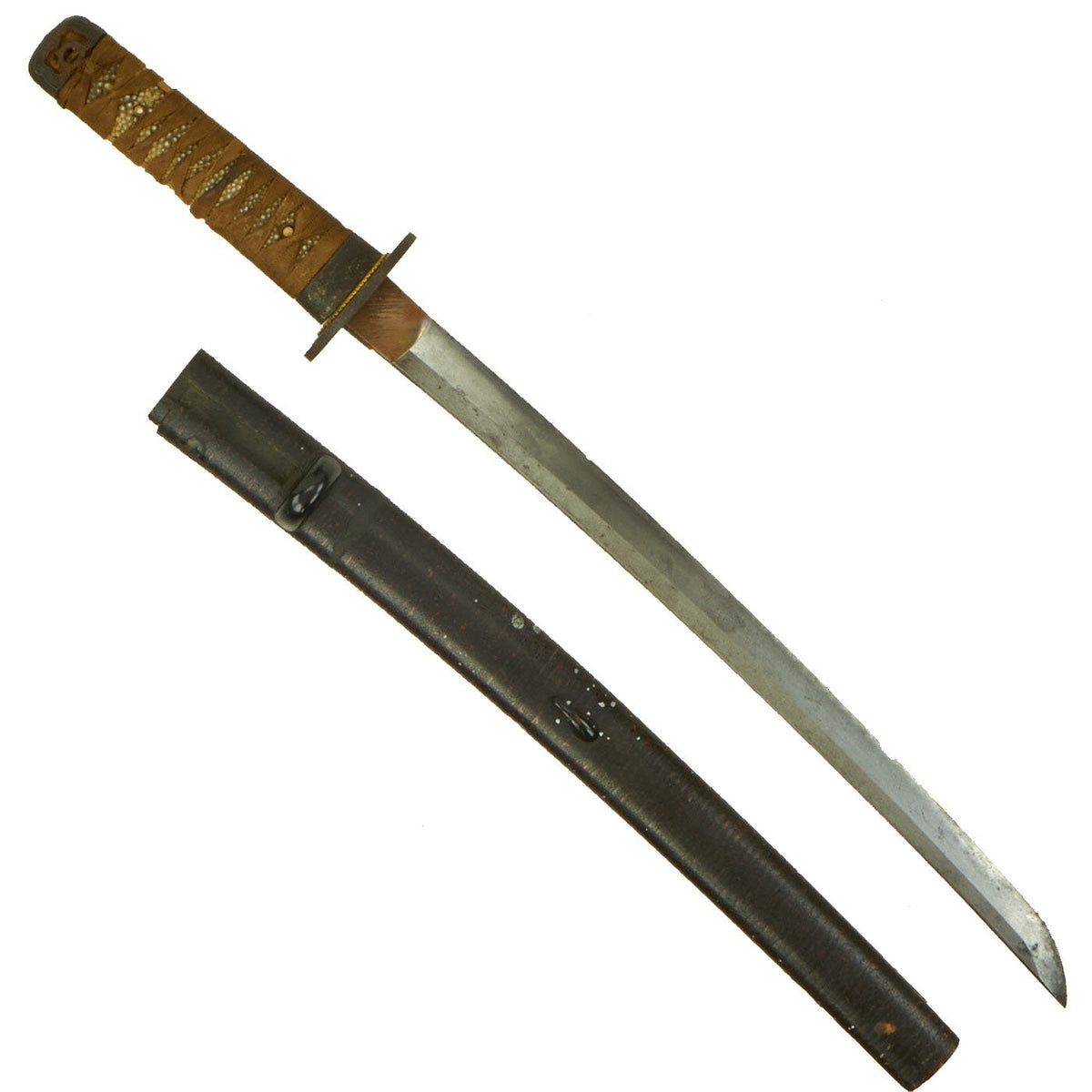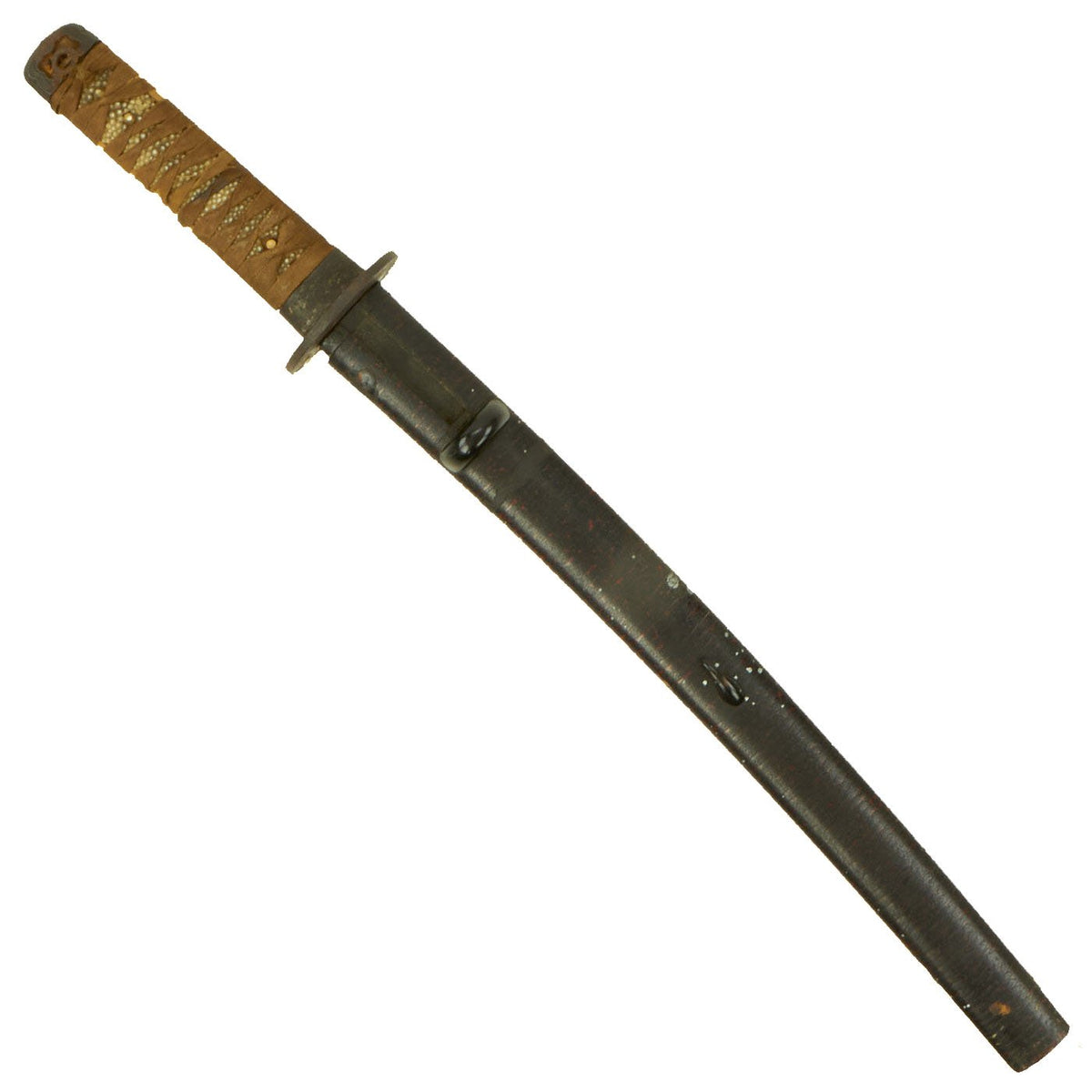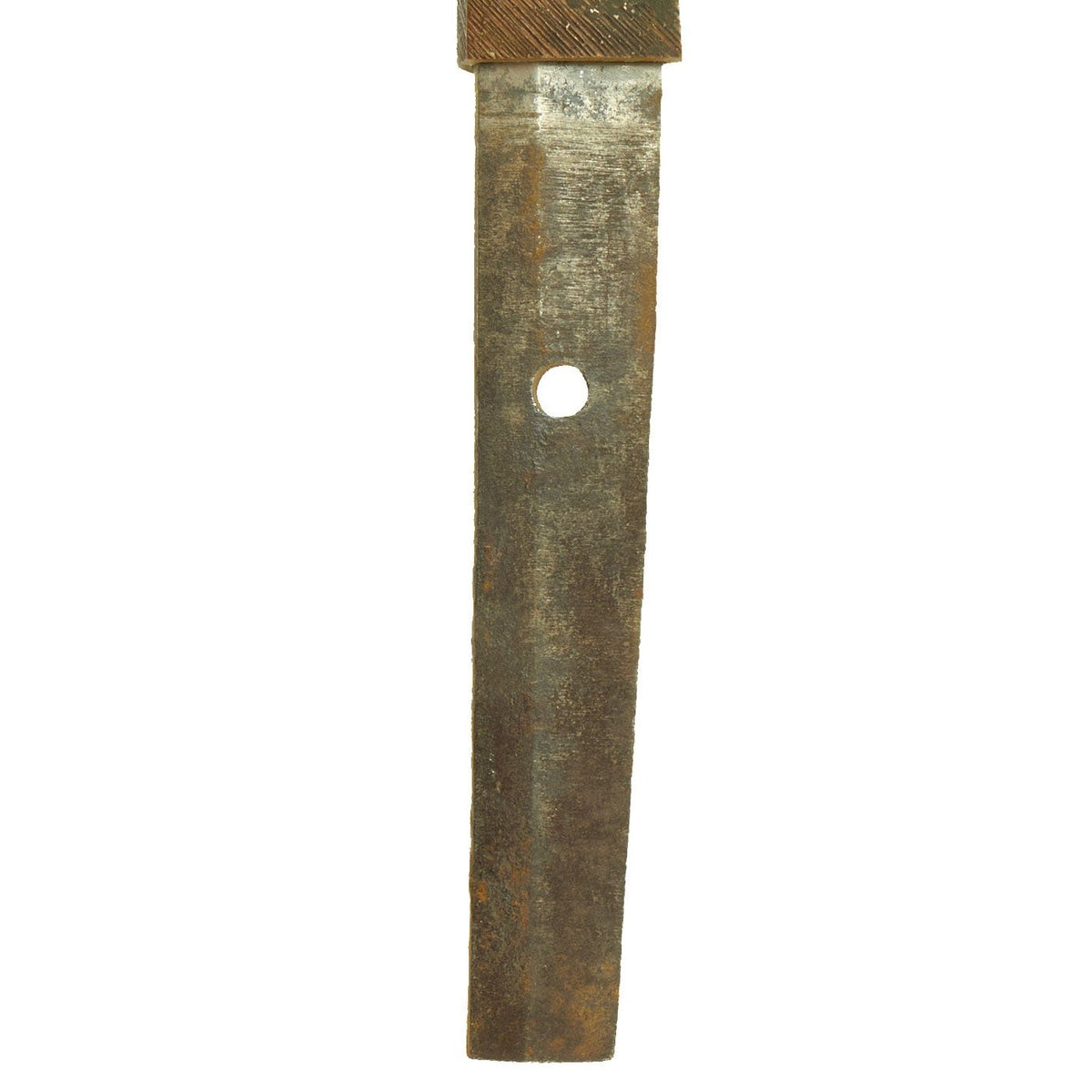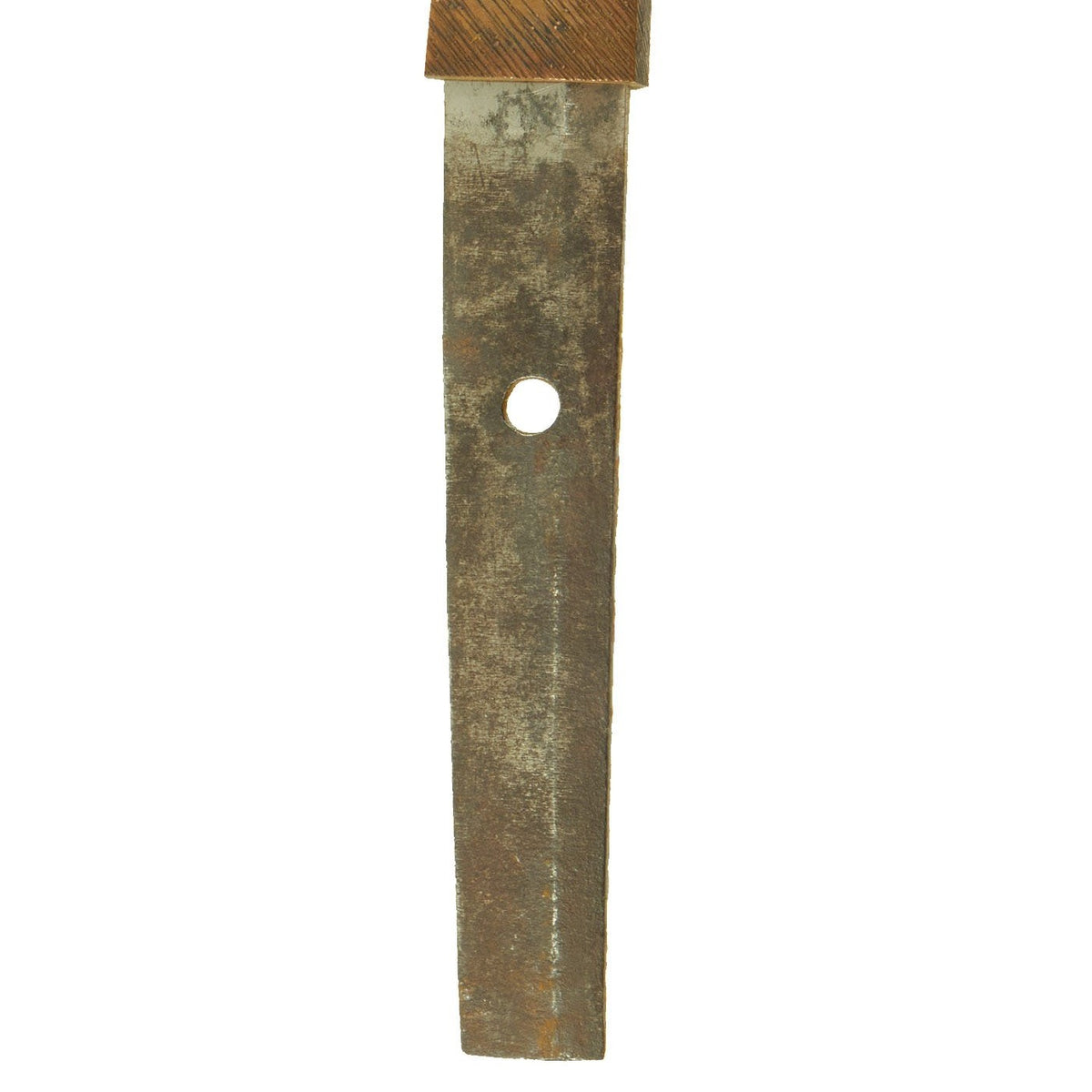Original 17th – 18th Century Edo Period Japanese Wakizashi Short Sword with Handmade Blade and Scabbard Original Items
$ 1.495,00 $ 373,75
Original Item: Only One Available. Wakizashi (脇差 “side inserted / companion sword”) is a general term for a sword between one and two shaku long (30 cm and 60 cm), predominantly made after 1600. Generally it is the short blade that accompanies a katana in the traditional samurai daisho pairing of swords, but may be worn by classes other than the samurai as a single blade, also worn edge up as the katana.
This example dates from the Edo period (江戸時代, Edo jidai) or Tokugawa period (徳川時代, Tokugawa jidai) of Japanese history. This is the period between 1603 and 1867, when Japan was under the rule of the Tokugawa shogunate and the country’s 300 regional daimyo.
This example has most likely been remounted several times, as was common for Japanese blades. Looking at the overall shape and the tang this blade was once slightly longer, and was cut down through the process of SURIAGE. If a blade is shortened, it can only be done from the tang end, to preserve the tip of the blade (kissaki) and tip temper line (boshi). The tang on such a blade is cut straight across at the bottom. This most likely removed the name of the maker, so this blade is considered 無名 (mumei), or “anonymous”.
The blade has the following period correct features:
– Folded steel blade (fold lines are evident on the spine and body of the blade)
– hole in the tang is punched and not drilled
– blade has a temper line (hamon), which is easily visible.
– Blade wounds (kizu) or lamination artifacts are present on the blade. Both ware (lamination lines) and fukure (carbon pits) are visible.
The Blade of this example is 15 3/8 inches long, and unfortunately saw much use and cleaning since the last polish. It has some staining, and removed light pitting, with nicks and dents on the edge. The hamon (temper line) is still visible, and is of the SUGU (straight) type. Nie Crystals are visible, and there is Nioi cloudiness visible with lamination lines. The tang (nakago) is of the futsu (regular) style, with a “kiri” (cut) tip, as is typical for a cut down blade. It also has a copper Habaki (blade collar), which is typical of the Edo period. Overall length of this wakizashi is 22 1/4 inches.
The tsuba (cross guard) is made of iron and is round, with brass flower and leaf inlays, and a cutout for a kogatana handle on each side. The fuchi (collar) for the tsuka (handle) is iron, as is the Kashira (End Cap), and there are no menuki present. The stingray (Sa-Me) grip with complete Ito (cloth binding) is worn, but still in good condition. The sword comes in a a well fitting textured black lacquer wooden scabbard (saya), which has a cutout for a kogatana knife, which is unfortunately absent.
The scabbard itself unfortunately has suffered damage over the years, and is partly split along one side, which has also caused the black lacquer to flake. It has an intact kurikata (knob) where the sageo (sword cord) would be attached, along with a short hook below it.
A nice Edo Period wakizashi, ready to display!
Specifications:
Blade Length: 15 3/8″
Overall length: 22 1/4“
Scabbard Length: 16 1/2″
It has been over one thousand years ago that the art of making swords appeared in Japan. The swordsmiths of the time may not have known it but they were creating a legendary sword. The Samurai sword has seen combat in many battlefields. From the early days of the Samurai warrior to the fierce battles in the South Pacific during WWII.
Each hand-made Japanese blade (日本刀 – Nihonto) is unique because it is forged from multiple pieces of folded steel stock. A tremendous amount of work is dedicated to creating these pieces. They were an instrument of war as much as a beautiful artifact to adorn a room.
The traditional Japanese blade and mountings have grown to be one of the most highly desired military antiques.
Fast Shipping with Professional Packaging
Thanks to our longstanding association with UPS FedEx DHL, and other major international carriers, we are able to provide a range of shipping options. Our warehouse staff is expertly trained and will wrap your products according to our exact and precise specifications. Prior to shipping, your goods will be thoroughly examined and securely secured. We ship to thousands clients each day across multiple countries. This shows how we're dedicated to be the largest retailer on the internet. Warehouses and distribution centres can be located throughout Europe as well as the USA.
Note: Orders with more than one item will be assigned a processing date depending on the item.
Before shipping before shipping, we'll conduct a thorough inspection of the items you have ordered. Today, the majority of orders will be delivered within 48 hours. The delivery time will be between 3-7 days.
Returns
The stock is dynamic and we cannot completely manage it because multiple stakeholders are involved, including our factory and warehouse. So the actual stock may alter at any time. It's possible that you may not receive your order once the order has been made.
Our policy is valid for a period of 30 days. If you don't receive the product within 30 days, we are not able to issue a refund or an exchange.
You can only return an item if it is unused and in the same state as the day you received it. You must have the item in its original packaging.
Related products
Uncategorized
Angolan Rebel 1970s era 60mm Inert Display Mortar from Angolan Civil War Original Items
Uncategorized
Uncategorized
Uncategorized
Uncategorized
Band of Brothers ORIGINAL GERMAN WWII Le. F.H. 18 10.5cm ARTILLERY PIECE Original Items
Uncategorized
Uncategorized
Uncategorized
Uncategorized
Armored Burgonet Helmet & Polearm from Scottish Castle Leith Hall Circa 1700 Original Items
Uncategorized
Uncategorized
Uncategorized
Uncategorized
Uncategorized
Uncategorized
Uncategorized
Uncategorized
Uncategorized
Australian WWII Owen MK1 Machine Carbine SMG Custom Fabricated Replica with Sling Original Items
